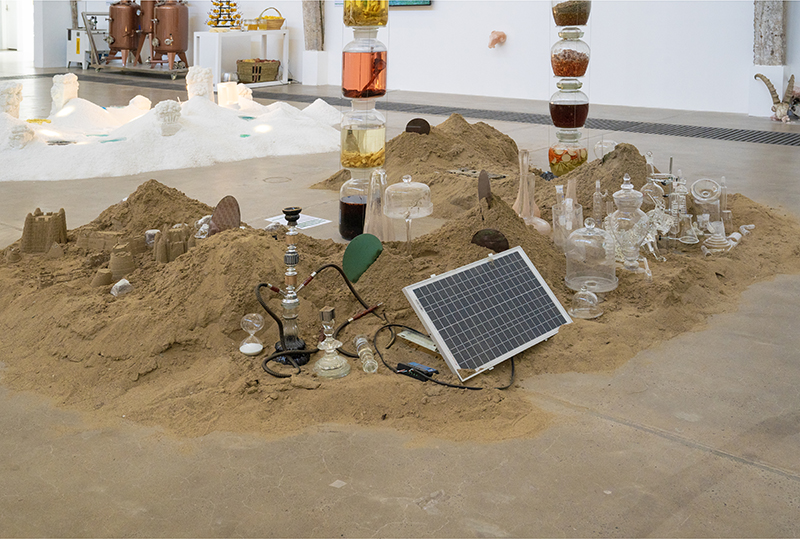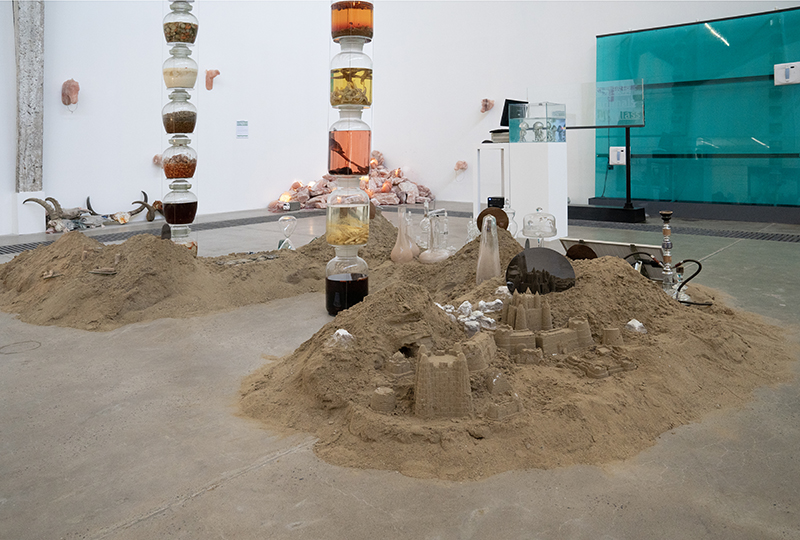 |
From Sand to Glass |
||||||||||||||||||||||||||||||||||||||||||||||||||
|
Here are several dunes of sand piles, between which scattered castles carved out of high-quality sea sand rich in silica. Parts of the castles, with no other auxiliary material added, were treated in ceramic electrical kiln. At 800 degrees Celsius, they turned crimson yet not vitrified. Other parts, treated the same way, melted into flowing fluids at 1350 degrees Celsius. They turned green-gray after solidifying and sawed. Those added with auxiliary materials, namely boric acid, borax, limestone, wood ash, quartz sand, and low melting point glass powder, were burned with an alcohol blast lamp and turned partially vitrified. The fulgurite, which originated from the Tengger Desert and the Sahara Desert, is a mixture of natural vitreous material and new minerals. When a bolt of cloud-to-ground lightning hits sand and mud rich in silica, they instantly melt at thousands of degrees and are soon quenched and consolidated into the fulgurite due to rain or other causes. Fulgurites are mostly elongated in shape, similar to the path of a lightning bolt, up to several meters in length. The hollow ones are smooth on the inside, possibly with small bubbles, and mostly sandy on the outside. We've made a batch of special glassware, half transparent and half containing sand. They are displayed on dunes of sand along with pure glassware, glass sculptures and artificial glass stones. Some wafers are inserted in the sand at an angle to each other, resembling the setting sun. Laser pointers powered by a solar panel hit the wafers, causing repeated refraction.
|

